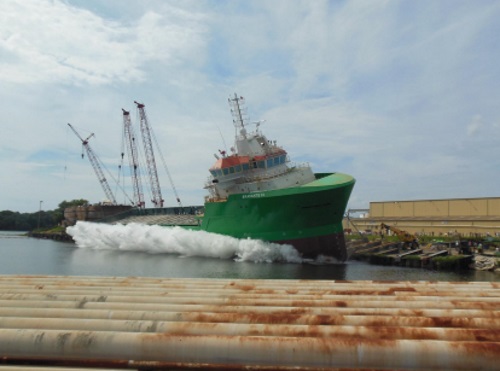The U.S. Department of Transportation’s Maritime Administration – know by the acronym MARAD – recently made nearly $20 million in fiscal year 2023 funding available for maritime workforce training and small U.S. shipyard modernization efforts.
[Above photo by MARAD]
MARAD said that funding, available through its Small Shipyard Grant Program, helps “strengthens the economic competitiveness of shipyards by providing grants that can be used to purchase equipment or provide employee training.”
In July 2022, MARAD awarded $19.6 million in grants to 24 small shipyards in 19 states through this program.
Applications for this round of Small Shipyard Grants – available to U.S. shipyards with fewer than 1,200 production employees – are due by February 27.

“Small shipyards are essential to the U.S. maritime industry and critical to ensuring that we have a resilient industrial base,” said MARAD Administrator Ann Phillips in a statement.
“These shipyards are an economic pillar, strengthening our maritime industry and the communities along and near our nation’s ports and waterways, and employing thousands of Americans, who ensure the nation maintains expertise and skills critical to our economic and national security,” she noted.
MARAD added that its Small Shipyard Grant Program has awarded 323 grants totaling approximately $282 million since the program was first funded in 2008.
A report issued by MARAD in June 2021 indicates shipbuilding and repair activity at both the national and state level by private U.S. shipyards in calendar year 2019 supported $42.4 billion worth of gross domestic product.
MARAD’s report, entitled “The Economic Importance of the U.S. Private Shipbuilding and Repairing Industry,” found that the nation’s 154 private shipyards directly provided more than 107,000 jobs and contributed $9.9 billion in labor income to the national economy in 2019.
On an annual nationwide basis – including direct, indirect, and induced impacts – the industry supported 393,390 jobs, $28.1 billion of labor income, and $42.4 billion in GDP, the agency said.
 Nation
Nation
WVDOT Profiled in Latest State DOT 2-Minute Update
October 10, 2025 Nation
Nation

